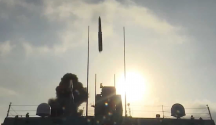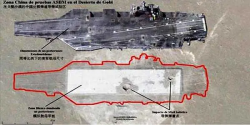The YJ-21's warhead is much smaller and thinner than you think when it's diving.Compare what we know of the SM-6 and the dedicated YJ-21 ASBM launched from the Type-055. The caveat is that the YJ-21 is likely a significantly larger missile.
The YJ-21 has a range of 1500? Km and a terminal speed of Mach 10?
In ASBM mode, the SM-6 has a range of 500? km and a maximum speed of Mach 3.5
A missile travelling at Mach 3.5 is a lot easier to hit than one at Mach 10.
With these numbers, there is a 8x difference in kinetic energy for the same mass.
Also the huge speed gap between the manoeuverering YJ-21 warhead and the climbing SM-6 gives a very tiny intercept window for the SM-6. In real world SM-6 will mostly miss the target.
BTW a lot of Chinese sources indicated that they normally use over 20 ASBMs, ship/air launched or the land based together in a coordinated attack, against one aircraft carrier.



